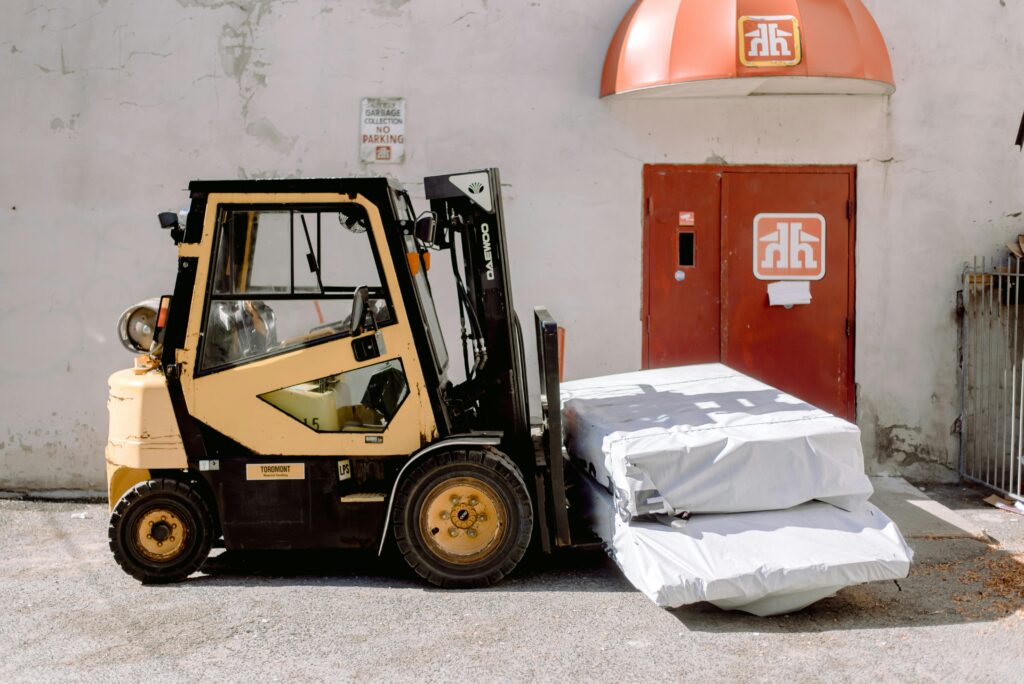
Operating a forklift requires a high level of skill and attention to safety. Forklifts are essential tools in warehouses, factories, and construction sites, but improper use can lead to accidents, injuries, and damage to goods. By following safety guidelines and best practices, however, operators can reduce risks and ensure safe handling of both the forklift and the loads being moved.
That said, the first step to safely operating a forklift is proper training and certification. Forklift operators must complete an accredited training course, which typically involves both theoretical learning and practical driving assessments. This ensures that the operator understands how to handle the vehicle and the loads safely, including maneuvering in tight spaces, operating different types of forklifts, and using various attachments.
At American Forklift Certification, Inc., we provide comprehensive safety training and hands-on operation guidance to reduce workplace accidents, injuries, and deaths. Our services include inspection and maintenance, engine and motor operation, loading and unloading, steering and maneuvering, tractor-trailer loading, and more, along with job assistance and career resources to help you succeed in your role.
After you’ve received proper training and certification, here are 7 reminders to help you safely operate a forklift and handle your loads.
REMINDER 1: Inspect Your Forklift Before Use
Before starting any job, always perform a pre-operation inspection of the forklift. Check key components, such as the tires, forks, overhead guard, mast, and steering. Additionally, ensure the fuel or battery levels are sufficient, and test the brakes, lights, and horn. If you notice any fluid leaks, worn-out parts, or unusual noises during operation, then immediately stop using the forklift and report the issue for inspection and repairs to prevent potential accidents or equipment failure.
REMINDER 2: Know the Weight Limits
Forklifts have specific limits for the loads they can carry and it’s important that you don’t exceed it. Overloading a forklift increases your risk of tipping over, damaging the equipment, or even dropping the load. Therefore, always make sure to check the weight of your load before lifting and make sure the weight falls within the forklift’s capacity.
REMINDER 3: Plan the Route Before Driving
Before moving your load, carefully plan your route to ensure it is clear of obstacles and hazards such as other machinery, workers, or uneven surfaces — to help reduce the chances of collisions or accidents. Consider if there are any narrow aisles, doorways, or sharp corners that require you navigating.
REMINDER 4: Use Safe Lifting Techniques
When picking up a load, first make sure you’re not moving. Your forklift has to be stationary. Then, position the forklift directly in front of it and lower the forks to the load’s base, ensuring they are evenly spaced to maintain balance. Next, insert the forks underneath the load and tilt the mast slightly backward to secure the load during lifting. Finally, keep the load centered on the forks to maintain balance.
REMINDER 5: Drive Slowly and Carefully
As you probably know, forklifts require cautious handling. Therefore, drive your forklift at a slow, controlled speed, especially when turning corners or driving in areas with pedestrians. Moreover, keep your load low to the ground to improve visibility and maintain stability. If, however, the load is obstructing your view, then drive in reverse to avoid blind spots.
REMINDER 6: Watch for Pedestrians and Other Vehicles
We can stress this enough, but always stay vigilant and be aware of your surroundings at all times. Forklifts can be deadly. Accordingly, use your mirrors, warning lights, and the horn to alert pedestrians and other drivers of your presence. In addition, never drive your forklift with people on the forks or stand beneath a lifted load, as this can result in serious injury or death.
REMINDER 7: Park Safely After Use
When parking your forklift, choose a flat surface and lower your forks to the ground. Turn off your engine and set the parking brake. If you’re working in a multi-operator environment, communicate the status of the forklift to the next user and document any maintenance needs.
In conclusion, safe forklift operation is about more than just driving carefully — it’s about inspecting equipment, understanding load limits, and being aware of your work environment. By taking note of these reminders, you can reduce your risk of accidents, protect your fellow workers, and ensure efficient handling of loads. Proper training, awareness, and caution are key elements of operating a forklift safely.
Contact American Forklift Training, Inc. today to learn more about our training programs and how we can help you achieve your forklift certification and training goals.
